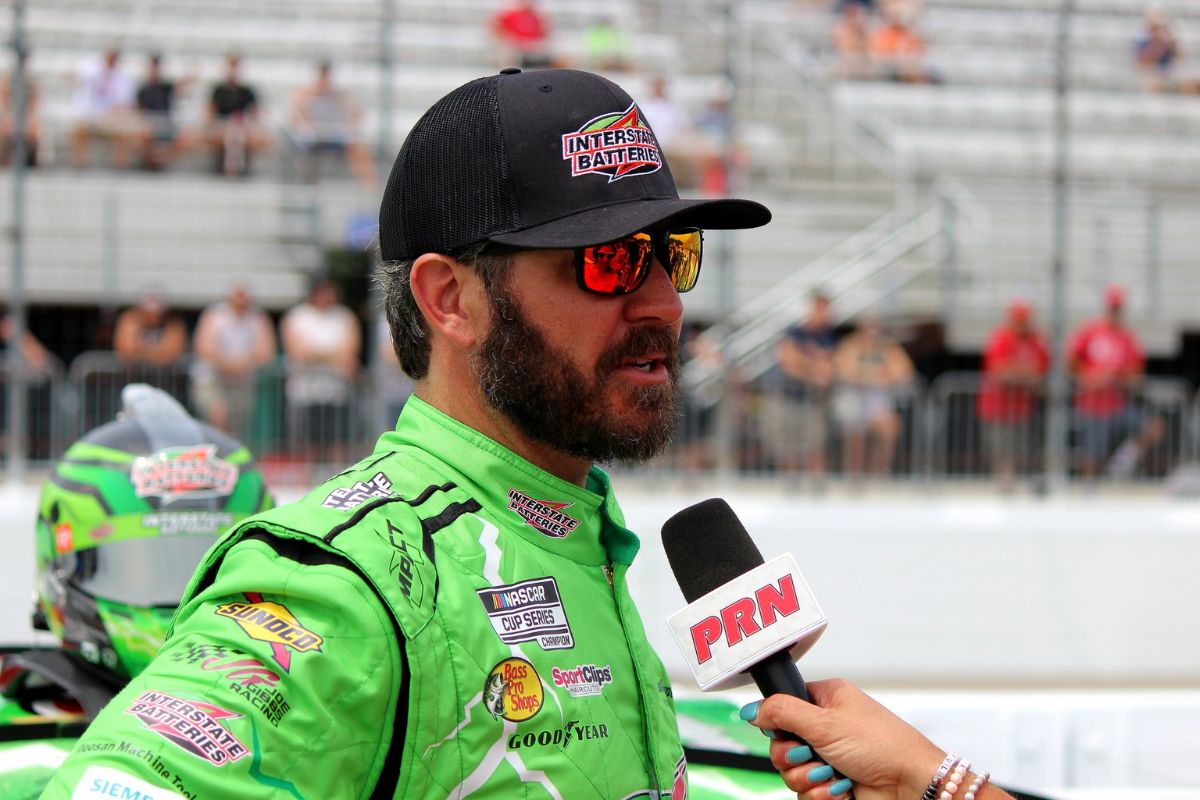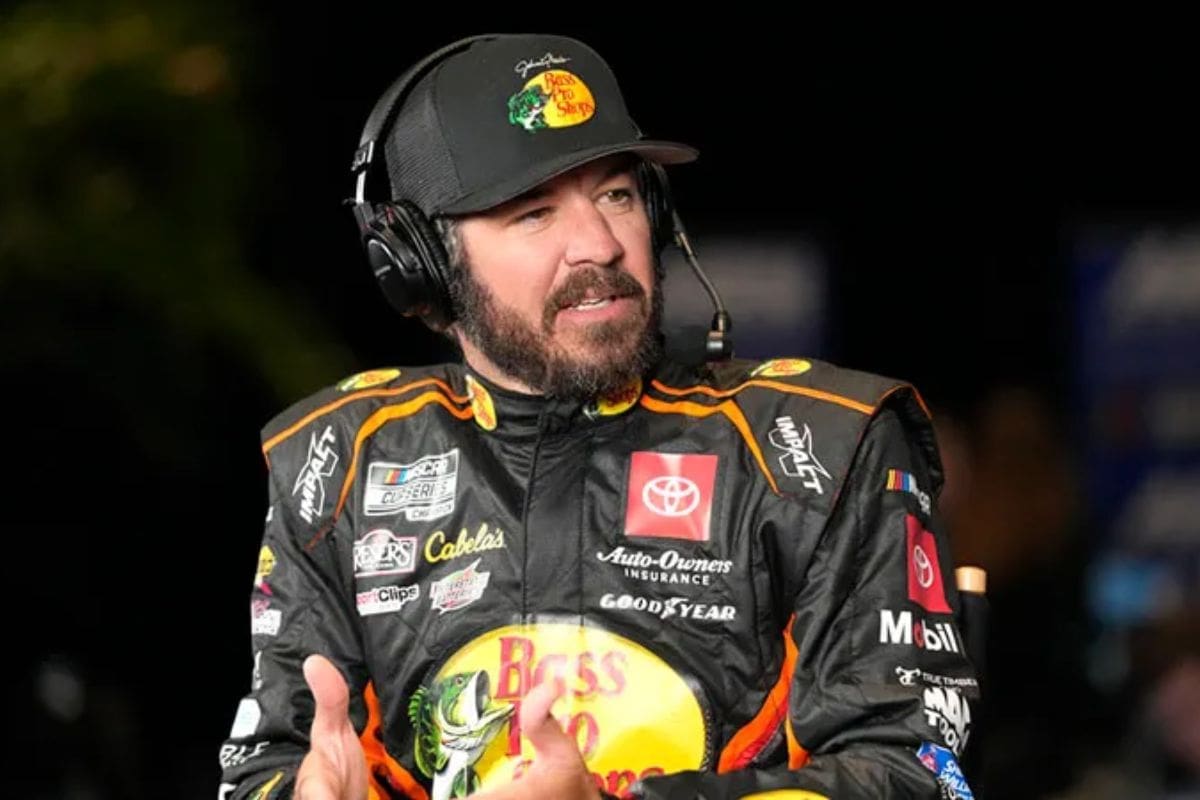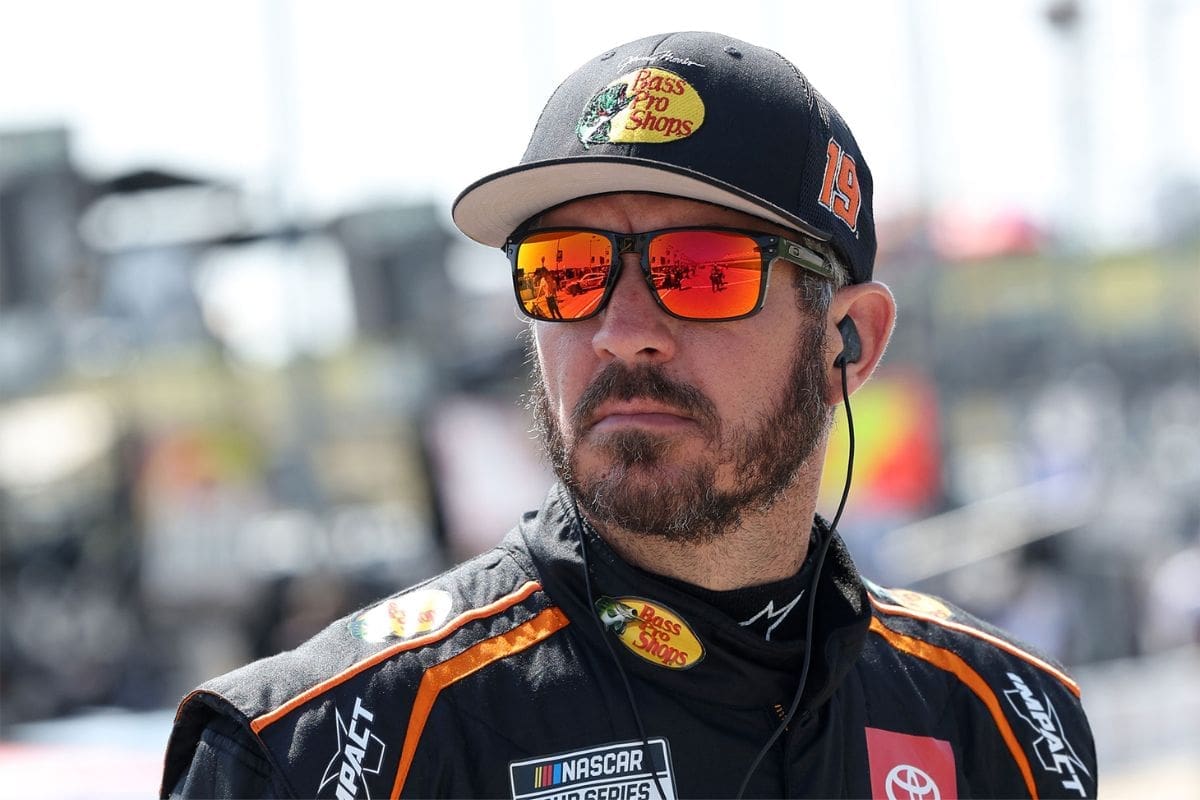Martin Truex Jr’s Talladega Frustration: The recent race at Talladega proved exceptionally challenging for Martin Truex Jr., whose performance was greatly hindered by a series of technological failures and strategic missteps. The pivotal moment of the race saw Truex struggling with a dysfunctional radio system, a critical tool for timely and safe navigation on such a track. This technical snag, coupled with a series of suboptimal pit stops, not only eroded his chances of leading but also exposed deeper issues in team coordination and race strategy. The result of these frustrations was markedly visible in Truex’s heated exchange over the team radio.
Key Takeaways
- Martin Truex Jr faced radio malfunctions at Talladega, disrupting communication with his spotter.
- The radio issues prevented crucial in-race updates and strategic decisions.
- Frustration peaked when Truex missed a critical pitstop due to the ongoing radio problems.
- Both Truex and his spotter, Drew Herring, expressed significant frustration over the communication breakdown.
- This incident impacted Truex’s competitive performance and safety during the race.
Martin Truex Jr’s Radio Woes at Talladega
In GEICO 500 at the Talladega Superspeedway, tri-oval track Martin Truex Jr experienced significant communication breakdowns, as his radio malfunctioned, severing the essential link between him and his spotter, Drew Herring. This issue is not simply a minor inconvenience but a critical safety hazard in the tightly-packed racing environment of NASCAR. The driver-spotter communication is necessary for navigate through traffic, avoiding accidents, and making strategic decisions on the fly.
The radio, a seemingly simple piece of technology, is, in reality, a lifeline in NASCAR. It allows the spotter to provide real-time updates about the positions of other vehicles, warn of impending hazards, and advise on when to make decisive moves. In an environment where cars are separated by mere inches at speeds often exceeding 200 miles per hour, the inability to receive this information compromises not only the competitive edge but also the safety of the driver and surrounding teams.
"All of our radios are f***ed up right now," No. 19 team tells Martin Truex Jr. They will be switching to a second channel during this caution.
— Jordan Bianchi (@Jordan_Bianchi) April 21, 2024
Pitstop Woes Compound Truex’s Frustration
Compounding Martin Truex Jr’s woes at Talladega, a critical pitstop was missed due to his ongoing radio issues, thrusting him further back in the race lineup and intensifying his frustration. This incident not only highlighted the mechanical vulnerabilities inherent in NASCAR racing but also underscored the cascading consequences of early disruptions in a driver’s race strategy.
“We were supposed to come a lap earlier. Our radios f***ing suck right now”-Truex
The missed pitstop occurred at a juncture when precision was paramount. Typically, these stops are meticulously planned sequences where seconds can dictate the outcome of entire segments. Truex, already struggling with communication breakdowns, found himself unable to respond to his team’s strategies. As a result, the delay in pitting forced him into an untimely stop, which inevitably positioned him at a disadvantage relative to his competitors.
Martin Truex jr. "Worst racing ever," on the super slow laps being turned to save fuel. #NASCAR
— Toby Christie (@Toby_Christie) April 21, 2024
Frustration Peaks for Truex and Herring
Martin Truex Jr’s mounting frustration reached a peak as he voiced his exasperation in vivid terms, mirroring the sentiments of his spotter, Drew Herring, who lamented the ongoing radio communication issues. This crescendo of discontent at Talladega Superspeedway highlighted more than just the day’s challenges; it showed a series of escalating challenges that have plagued their team’s performance and strategic execution on race days.
For Truex and Herring, the communication breakdown was not just a technical failure; it was a significant strategic setback. This radio malfunction meant lost opportunities in positioning, overtaking, and importantly, safety – all fundamental to achieving top results in racing. Each static-laced transmission and missed message amplified their frustration, reflecting the importance of flawless technology in the orchestration of a successful race strategy.
As the race progressed, the issues persisted, leading to Herring’s visible frustration. His role, pivotal in steering through the chaotic aerodynamics and tightly packed racing inherent to Talladega, was compromised. This not only impeded Truex’s ability to compete effectively but also heightened the risks associated with pack racing.
Truex Jr’s Disappointment with Racing Style
Beyond the technical difficulties, Truex Jr also expressed significant dissatisfaction with the prevailing racing strategies in NASCAR, particularly criticizing the monotonous focus on fuel management that, in his view, detracts from the sport’s excitement. This discontent highlights a deeper issue within the racing community, where the intricate balance between strategy and spectacle is tipping unfavorably towards conservation over competition. Truex, a seasoned driver, finds the current emphasis on fuel economy not only dull but counterintuitive to the essence of racing, which is inherently about speed, agility, and driver skill.
This critical perspective sheds light on a broader sentiment among drivers and fans alike who yearn for a more dynamic and unpredictable race environment. The current strategies, dominated by fuel-saving tactics, often lead to a more calculated and less spontaneous form of racing. This approach can diminish the raw competitiveness that is central to NASCAR’s appeal and heritage.
Moreover, the focus on fuel management may be seen as a response to the evolving technological landscape and environmental concerns in the sport.
Truex Jr’s Determination to Bounce Back
Undeterred by recent setbacks, Truex Jr. is resolved to make a significant comeback in the upcoming races. After a frustrating P11 finish at Talladega, a venue where victories can pivot on the caprices of draft and chance, his focus has sharpened. Truex now finds himself at a pivotal juncture, where the urgency to recalibrate his approach and secure a race win has intensified. This isn’t merely about rebounding; it’s about a meticulous reevaluation of his racing strategy in response to NASCAR’s evolving competitive landscape.
News in Brief: Martin Truex Jr’s Talladega Frustration
The series of technical setbacks experienced by Martin Truex Jr. at Talladega, including radio malfunctions and pit stop inefficiencies, show the critical importance of technological reliability and strategic precision in NASCAR racing. These issues not only compromised safety but also competitive performance, catalyzing a profound sense of frustration.
Moving forward, it is imperative that Truex and his team recalibrate their approach to address these challenges, ensuring a more robust and dynamic engagement in future races.
Our Reader’s Queries
Q. Has Martin Truex Jr won Talladega?
A. One notable win for him was at Talladega Superspeedway, ending his car owner’s restrictor plate race streak in the Busch Series. Another victory came at the last NASCAR event held at Nazareth Speedway. Following Nazareth, he briefly led the championship standings before ultimately conceding the top spot to rookie Kyle Busch in subsequent races.
Q. Does Martin Truex have a son?
A. In his personal life, he’s connected to racing royalty. As the younger brother of the 2017 Cup Series champ and two-time Busch Series victor, Martin Truex Jr., and the offspring of former Busch Series racer, Martin Truex Sr., motorsport runs deep in his veins.
Q. Did Martin Truex separate from his wife?
A. Pollex and Truex were a pair from 2005 to 2023, sharing a public declaration of their separation in January.
Q. Did Martin Truex Jr. split with his wife?
A. Pollex and Sherry Pollex parted ways just months prior to her passing.
ALSO READ: Martin Truex Jr’s Retirement Plans: A Shocking Revelation





